Rabbits greater ancestor! Devolutionary link found.
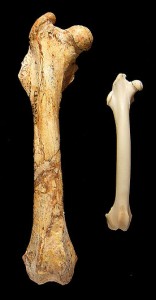 The most outstanding thing about the rabbits greater ancestor is its gigantic size (average 12kg) although this estimate may be too low. This animal also distributes a very robust skeleton which is a very amazing and predictable feature from a devolutionist’s perspective.
The most outstanding thing about the rabbits greater ancestor is its gigantic size (average 12kg) although this estimate may be too low. This animal also distributes a very robust skeleton which is a very amazing and predictable feature from a devolutionist’s perspective.
The skeleton is said to be short and stiff, the cartilage was not persevered so inaccuracies abound in the spinal reconstruction. This would make the skeleton larger than what is being portrayed.
It seems the skull reconstruction may be tilted downward in the back as the underside is broken off. A slight tilt (front downward) would display that the braincase is large and cohesive with this large animal.
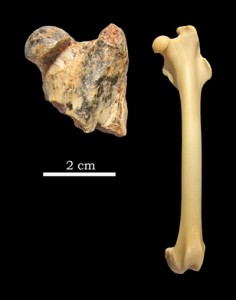 There is a decrease in this creature in metabolic energy expenditure, as in all creatures this is due to the amount of use from food consumed compared to heat loss. Most creature today expend most of their energy (80 percent or more) to this. There is a big energy expenditure difference between reptiles and mammals.
There is a decrease in this creature in metabolic energy expenditure, as in all creatures this is due to the amount of use from food consumed compared to heat loss. Most creature today expend most of their energy (80 percent or more) to this. There is a big energy expenditure difference between reptiles and mammals.
The skeleton is found in the Pliocene flood layer.
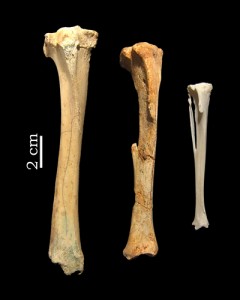 This creature is a Leoporid of extraordinarily large size, and the skull is small relative to body size.
This creature is a Leoporid of extraordinarily large size, and the skull is small relative to body size.
Which makes this creature (Microcephalus). As are all greater ancestors expected to be.
(Read “I found a tooth now what”) To learn more about Microcephalus vs. Macrocephalus reconstructions.
The skeleton was found in Minorca, Spain.
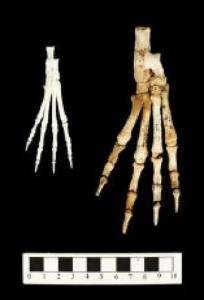 The sinus cavity is and facial reconstruction is partial, so the snout may have been longer, and may be a poor reconstruction resulting from failed preconceived ideals.
The sinus cavity is and facial reconstruction is partial, so the snout may have been longer, and may be a poor reconstruction resulting from failed preconceived ideals.
Ribs are relatively short and robust, though larger than its weaker descendants.
Longer robust forelimbs, and robust back limbs relatively short but longer than its weaker descendants.
Splayed phalanges, palmigrade, distal phalanges long and claw-like for better grip, better dexterity and balance, better for digging and quicker stops and side motions.
The holotype of Nuralagus is the most complete skull specimen discovered. It lacks the temporals, the parietals, the occipital, the nasals and the right premaxilla, the anterior part of the left maxilla, and the zygomatic arches. The facial tubercle is large and robust. The occipital (Fig. 4) is low and wide with a strong nuchal crest that surpasses the lateral margins of the occipital condyles. The foramen magnum is low and wide, its dorsal margin roughly coinciding with the upper limit of the occipital condyles. These are rather large compared with the size of the occipital.
With an estimated average body mass of approximately 12 kg, the new leporid from Minorca exceeds by about 10 times the estimated mean body mass of the ancestral continental Alilepus turolensis (-Martnez, 1989) from the Upper Miocene of Teruel (Spain). Compared to extant rabbits, Nuralagus is more than 10 times larger than wild O. cuniculus (1.0-1.2 kg) from continental Spain, and it even surpasses the body mass of the largest domestic rabbit by about 2 times (‘Flemish’; 7 kg). Compared to extant hares, Nuralagus is more than 2 times larger than individuals of the northernmost populations of the largest species of the genus Lepus (Lepus europaeus, up to 5 kg), which is the largest phenotype following Bergmans rule.
Comment: (The rabbits greater ancestor is bigger, better, stronger and faster than any weaker descendant that has spawned from it. Showing the opposite of evolution and clearly displays devolution a process of degeneration.)
- an endemic insular giant rabbit from the Neogene of Minorca (Balearic Islands, Spain) Journal of Vertabrate Paleontolgy Vol.31, Issue 2, 2011
by Greater Ancestors World Museum on Sunday, March 27, 2011 at 10:42pm
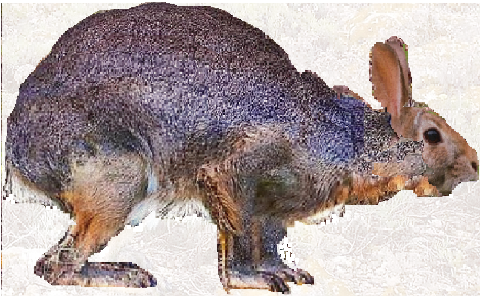
Um, no. This guy actually doesn’t ‘defy’ evolution at all. What you’re looking at is a species of rabbit that evolved on an island without any large herbivores to compete with it: ever heard of island gigantism?
This rabbit is outside evolutionary predictions, what we see here is best explained by devolution not evolution. We see degradation, degeneration, genetic entropy, not just with the rabbit but with every living organism. Although “Cope’s Law” (now Cope’s rule) is a staple Law of science for evolution, however the opposite is true. I would suggest not believing in “transmutational magic”, and not believing in evolution as science, when you set the politics aside you recognize it for what it is: . . . “repackaged pantheism”. I suggest learning about scientific pantheism, and naturalistic pantheism, only then will the evidence like this giant rabbit unravel the storytelling of evolutionism.
~Chris L Lesley